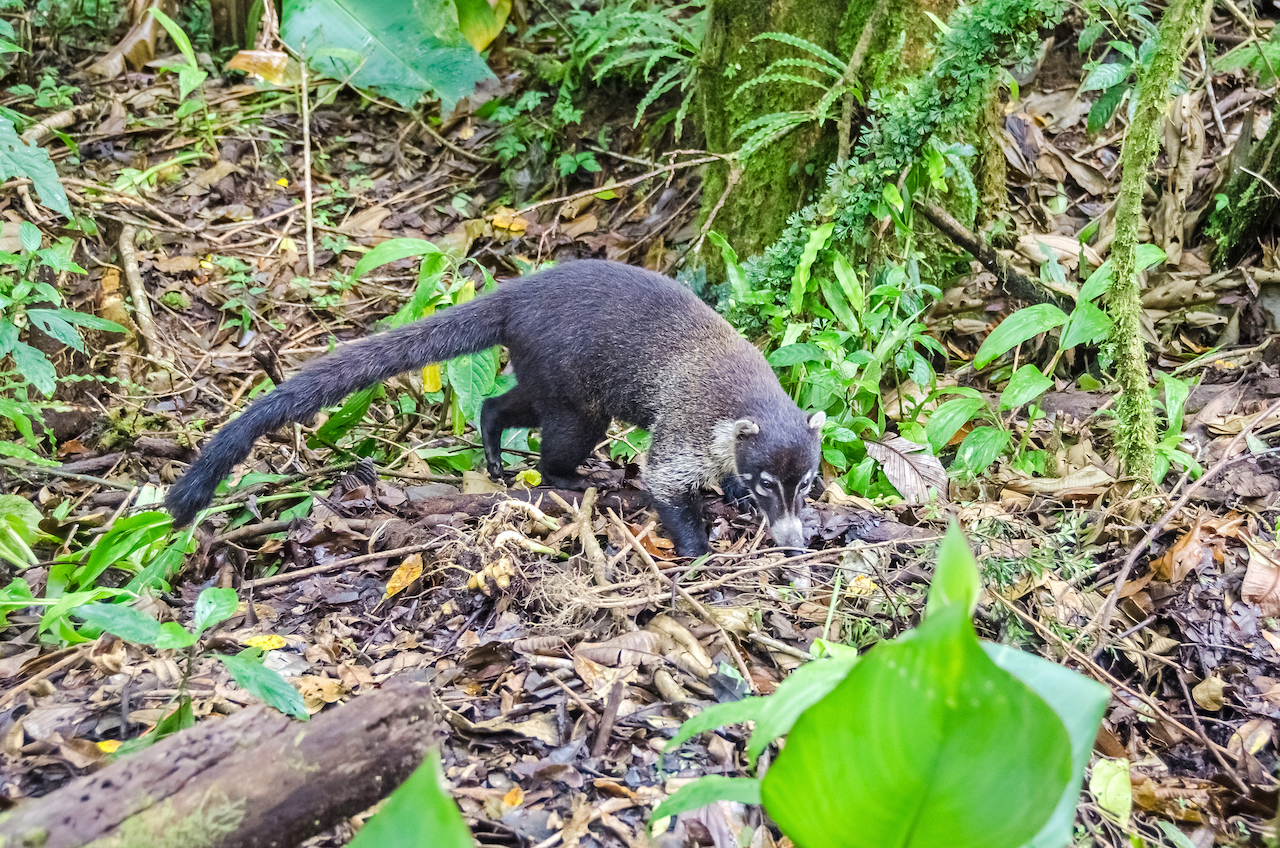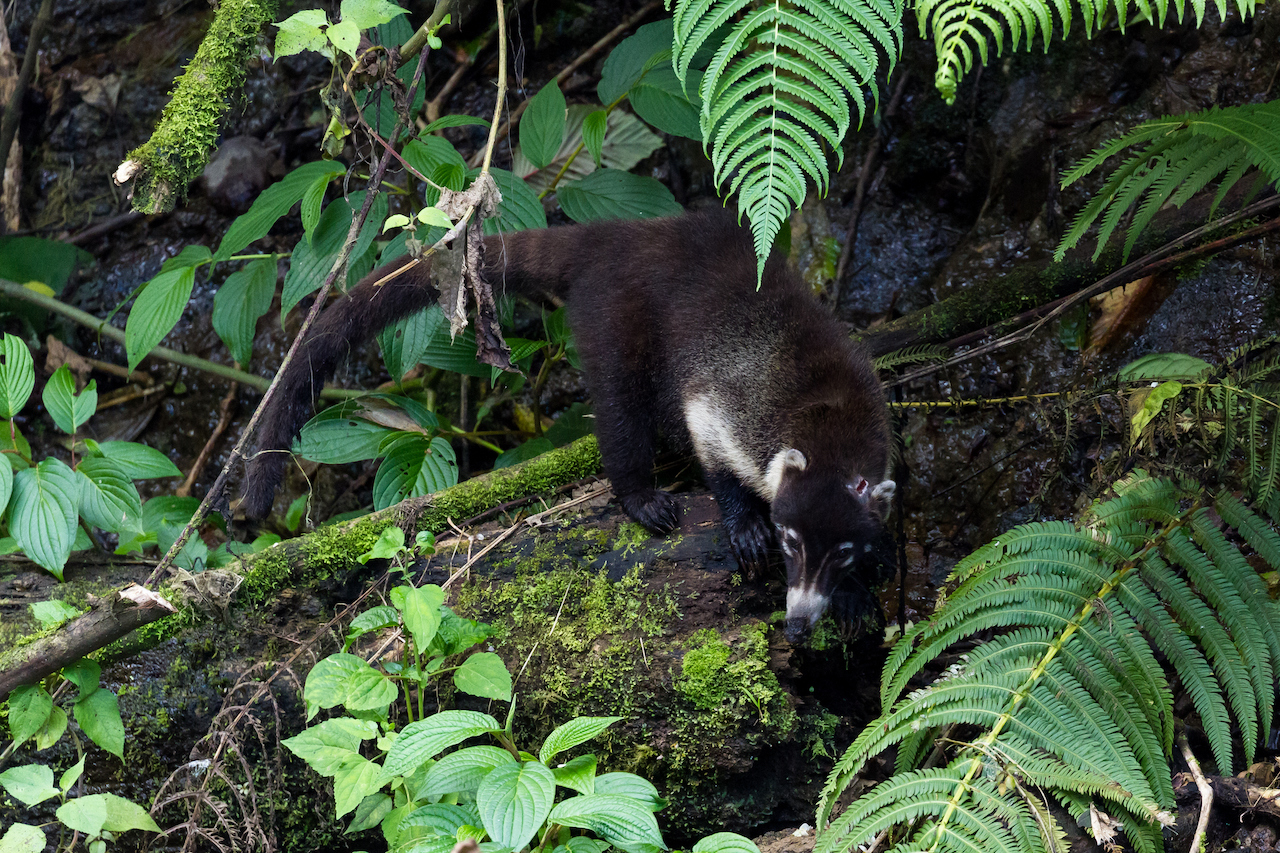The White-nosed Coati, what the science says about this interesting guy?

Characteristics.
The white-nosed coati is a member of the raccoon family. Its body is 1.5-2 feet long, and its tail is 2 feet long. It holds its long, thin, ringed tail upright when it is walking.
It has small ears; long, sharp claws; and a long, pointed snout that tilts up a little at the tip. It has a black mask and white around its eyes, nose, and on the inside of its ears. Its fur is brown with a mix of red and yellow on top and a lighter brown on its undersides. Its lower legs and the tops of its feet are blackish-brown. Males and females look alike, but males are much larger.

Distribution.
The white-nosed coati is found in the Southeast corner of Arizona, in the southwest corner of New Mexico, and in southwest Texas. It is also found in Mexico, Central America, and South America.
They are found through most of Costa Rica, especially near the coast. You will mostly see them in the rainforest, dry forest, or cloud forest. Coatis are common in the wetlands of the country, too. You are likely to spot Coatis climbing trees or walking in groups along the paths. People have come upon large groups ranging from 10-30 of Coatis! They are pretty friendly and usually watch humans while they are eating in hope of grabbing a bite themselves. Usually, you won’t find many adult males in these groups as they are put out at the age of two.
Habitat
The white-nosed coati lives in mountain forests, in woody canyons and near the coats from sea level up to 1.500 – 2000 meter up on the mid-range mountains.
Favorite Foods and Predators
The Coati is an omnivore just like its cousin the raccoon, meaning it eats just about anything it can find. In the forest, they love to eat tarantulas, lizards, rodents, birds, eggs, fruits and berries. Many people view them as pests – especially in cities – as they also get into garbage cans and raid campsites. Sometimes due to habitat loss, but other times because they are curious little creatures that enjoy causing mischief and eat everything it can find.
Besides man killing the Coatis, some animals view them as a great snack. The list encompasses pretty much anything that eats meat, for example, large snakes, wildcats, wild dogs/coyotes, and eagles.
Life Cycle.
The white-nosed coati mates between January and March. Males join female family bands. The male warns off competing males by baring his teeth, rearing up on his hind legs, and turning up the end of his snout.
Once the male has mated, the females in the band force him to leave the group. When the female is ready to give birth, she leaves the band. She has a litter of 2-6 young about 77 days after mating. She usually has her litter in a nest made in the crevice of a tree. The young leave the tree when they are four weeks old.
The mother and her pups rejoin the band when the pups are 5-6 weeks old. The pups are weaned when they are about four months old, but they stay with their mother until she leaves the band to give birth to her next litter. The white-nosed coati’s life expectancy is about 14 years.

Behavior.
Although the white-nosed coati spends a lot of time on the ground looking for food, it is also a very good tree climber and swimmer! Its long tail helps it keep its balance. It usually spends the night sleeping in a tree.
The male coati is solitary, but females and their young live and travel in packs of 4-40 individuals. They often take a break from foraging for food to groom each other.
Unlike most members of the raccoon family, the coati is active during the day, although adults may find a shady spot to nap when it gets too hot! Young coati is very playful and spend a lot of time chasing and wrestling with each other.
